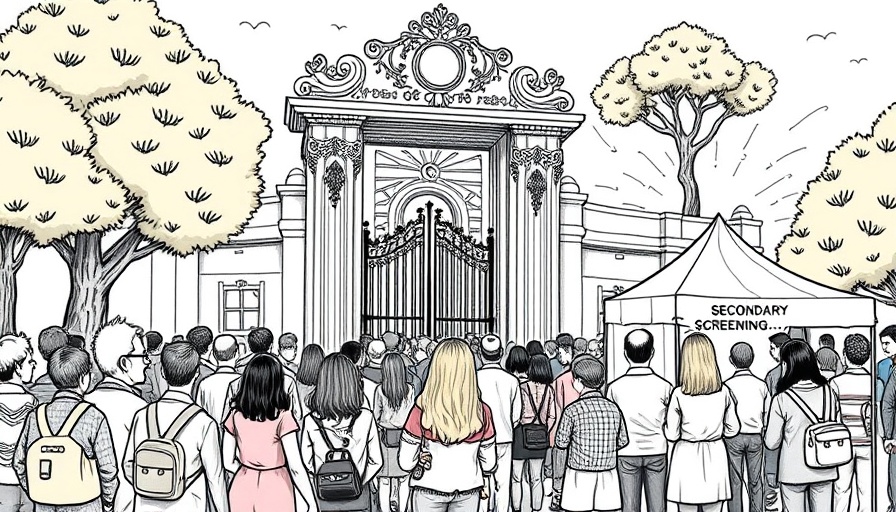
Heavenly Visas: A Modern Satirical Commentary on Faith and Mobility
In an audacious twist of humor, the General Conference (GC) has rolled out a satirical "Heavenly Visa Program," poking fun at both interdenominational mobility and the sometimes outlandish complexities that govern religious institutions. The program, highly fictionalized of course, humorously suggests that believers will soon need special visas to enter the heavenly realms. This cheeky take on the bureaucratic tendencies of religious organizations reflects deeper anxieties prevailing within the Seventh-day Adventist (SDA) community about faith, community, and belonging.
Understanding the Humor: What Lies Beneath the Surface?
This satire is not merely for laughs; it serves as a mirror to our lives. In today's fast-paced world, where faith communities continue to evolve and adapt, there lays a palpable tension between the desire for belonging and the sometimes rigid frameworks instituted by leadership bodies. The "Heavenly Visa" serves as a humorous metaphor for the barriers that can exist within religious organizations—be they cultural, social, or doctrinal.
The Real Conversations Behind the Comedy
Though this satirical program is an exaggerated concept, it draws attention to legitimate discussions surrounding access within religious communities. Many within the SDA faith express concern over who qualifies as a "real believer" or who is deemed worthy of spiritual benefits within the church. This raises numerous questions: Is there a hierarchy of faith in the church?What are the implicit qualifications given by church doctrine for entry into heaven? As believers navigate these tensions, the satirical approach can open discussions about inclusivity and the need for more open, welcoming practices within church communities.
Living in a Global Context: The Intersection of Faith and Culture
The concept of visas, even in jest, evokes a broader global context where nations enforce borders and treat immigration as contentious. As members of the SDA faith community read this satire, it encourages reflection on their own inclusivity practices. The GC's lighthearted jibes imply that our understanding of grace and acceptance shouldn't feel like a tangled web of applications to navigate; rather, it should resonate with the simplicity of faith.
Exploring Diverse Perspectives Within the Faith
While the satire provides a laugh, the true essence of the conversation remains complex. Among different regions and cultures, interpretations of belonging and acceptance diverge. The GC's fictional program highlights how people often grapple with the notions of sin, redemption, and the quest for love and grace; essentials of the SDA faith that should unite rather than divide.
Looking Ahead: How Humor Sparks Important Discussions
What this satire cleverly attempts is to ignite crucial conversations about who is included in God's realm and who may feel ostracized. By addressing these weightier themes through humor, the GC not only entertains but encourages a re-evaluation of the current narratives that hinder community-building within the church. In a world where societies are often polarized, perhaps laughter offers a bridge to foster understanding and grace.
Take Action: Reflect on Your Role in the Community
This satirical piece, while lighthearted, emphasizes the importance of inclusivity and love within the church. It invites the members of the SDA community to reflect on how they can play an active role in breaking down barriers and nurturing a welcoming environment for all. As you navigate your faith journey, consider fostering dialogue about acceptance, belonging, and grace.
 Add Row
Add Row  Add
Add 




Write A Comment